
If you buy "AuI ConverteR PROduce-RD" (2023/12.x version) from 24 August 2023 to 24 October 2023, you will get free update to version 2024 (13.x) after its release.
"Audiophile myths debunked" is one of the popular topics in forums and articles.
As rule, these "myths" is based on listening impressions, unexplained technically or small measurable difference is inaudible theoretically/probably.
To check the "myths" accurately, it's recommended to use a method, that ensures repeatability with the same results in similar conditions.
HiFi audio blind test is a way of "objective" measurement of "subjective" perception.
Read about the most important things, turning a HiFi test into safe evidence.
![7 Keystones of HiFi Blind Test [Article]](/sites/default/files/u1/hifi-blind-test.png)
- How to estimate sound quality
- Double-blind audio test
- ABX test for audio
- What's proper blind Hi-Fi test
- Methodology
- Test protocol
- Listening place
- Testing equipment issues
- Measurement precision issue
- Big number of measurements
- Careful condition control
- Conclusions
- Frequently Asked Questions
- Popular HiFi test kinds
- References
- Read more
How to estimate sound quality
HiFi blind test is a comparison when a listener (participant) try recognize unknown audible sample.
Sample here is either a recording, or equipment, or software, or apparatus/software mode.
This trial is an attempt to measure non-measurable music feature - perceived sound quality.
Objective here is measurability and repeatability in equal conditions. It's a scientific approach.
Subjective here is human feelings.
Still, we cannot access foreign feelings directly. We cannot listen to music like another person. We cannot be sure, that we feel the same each time even.
We can ask him/her only. But they can't exactly describe their feeling. Especially, it refers to the subtlest details, provided by modern musical equipment, software, HiFi test records.
But we want to know: is it really audible or not?
Double-blind audio test
The main aim of the blind trial is to eliminate the subjective part of perception: price, bias, habit, etc. I.e. probable imaginary perception should not impact the experiment.
Double-blind test is used for the "subjectivity" reduction.
Double-blind test is a trial where neither listener nor the conductor knows what is sample.
Blind test audio
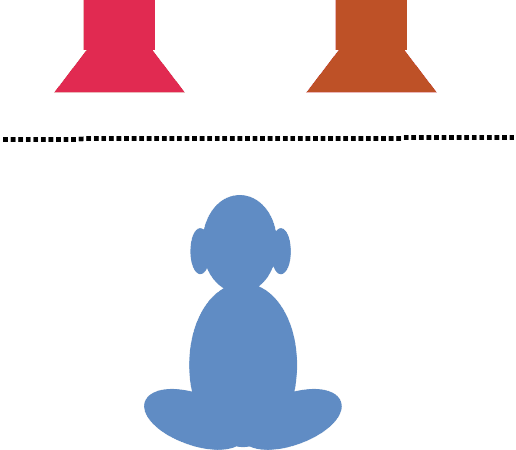
Back to top
ABX test for audio
ABX test may be used in ear comparison.
ABX test is a trial where samples A and B may be compared with sample X (either A or B). Listener should recognize what is X (A or B).
ABX test audio
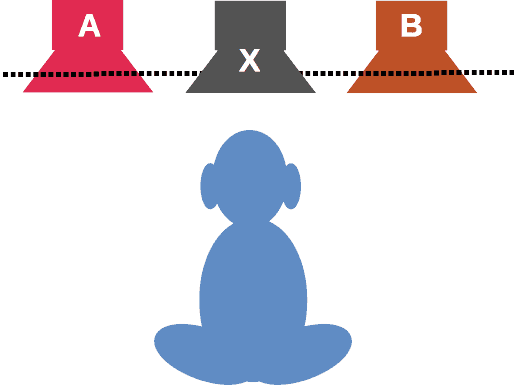
Foobar2000 with ABX test software plugin may be used to ABX test of audio files. However, the author doesn't know what happens with audio stuff when ABX-test-foobar's plugin prepares files before comparison (progress when the plugin start).
For ABX test Mac OS software you can try to find ABXer utility. For iPhone, ABX Tester application exists. Also, cross platform Lacinato ABX is available. The author doesn't learned these pieces of software, so he has no opinion.
If somebody claims that sound is different, it can't measure its audibility. Because we listen in the brains via ears.
Theoretically, measurement tools are more sensitive than human ears. But, without trials, we don't know where is audibility edge of difference.
Audibility edge is:
- maximal value of a feature or
- difference of values between listening samples,
that cannot be distinguished by human.
Professional double blind test of music equipment is not home entertainment. It is hard long expensive work.
It doesn't necessarily audiophile blind test should be done at laboratory. At home nobody can prohibit us to do it.
But safe trial results are necessary as claim evidences.
Back to top
What's proper blind Hi-Fi test
Proper blind test should consists these elements:
- Methodology
- Protocol
- Big number of measurements
- Listening place
- Testing equipment issues
- Measurement precision issue
- Careful condition control
Test should ensure repeatability in the same conditions.
Back to top
Methodology
Trial begins with methodology design. Methodology define trial's:
- aim,
- precision,
- implementation,
- other things, noted below.
Methodology should be designed first

Back to top
Test protocol
Test protocol is paper, where recorded detailed data about conducted trial:
- equipment,
- measurement tools,
- participants (and its listening skill, occupation, education, other),
- trial conditions,
- other.
Hi-Fi test protocol
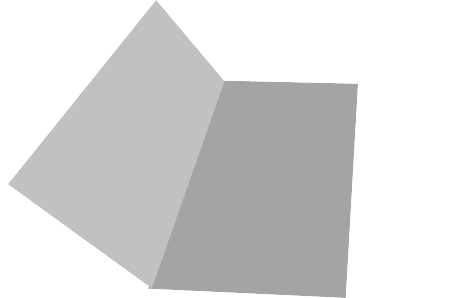
Testing and measurement equipment may be registered with unique identifier of item (serial number, as example).
The main protocol aim is ability to check experiment conditions in case of doubt or to better understand result reasons.
Back to top
Listening place
To save time several participants may be accommodated in one room. In the room are placed several seat rows.
In the trial result interpretation, necessary take into account:
- each seat impact to sound,
- seat with and without listener impact differently,
- speaker sound is different for each seat.
Speaker have individual radiation pattern.
Frequency response depend on listener place relatively speakers and listening room's walls. Because acoustical rays are interfere, bounce from a surfaces and interfere too.
Read more about loudspeakers...
Impact seat place to audio test results
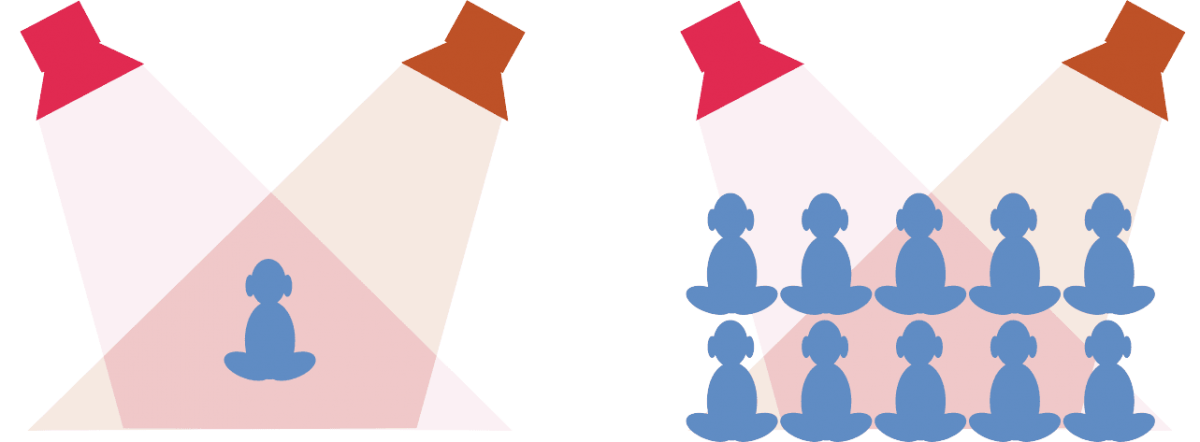
Anechoic room allow to avoid bouncing. But speaker have different frequency response in the different directions. So different seat places also cause different frequency response in anechoic room even.
Generally, only 1 sitting place in the listening room is recommended.
Back to top
Testing equipment issues
Testing equipment (apparatus that will tested in the trial) should be checked to workability by way, that may be described in the methodology of the trial.
It is desirable, if testing equipment have unique identifier (serial number). It help to repeat experiment or found difference result reasons in case of doubt.
Because different equipment instances may have various figures and sound differently.
Very important thing!
LOUDNESS OF COMPARED SAMPLES
Human perception edge is close to 1 ... 2 dB of loudness. So 0.1 ... 0.2 dB level normalization of samples is recommended.
Human have limited time of echoic memory (auditory event retaining) [2].
So time sample listening should not be too long. Immediate (real-time) easy switch between samples must be ensured.
Updated: When we compare headphones, tested sample can't be isolated from participant technically. For solving this issue, synthesis of headphone features and comparison via single headphone unit were suggested [3].
Back to top
Measurement precision issue
In statistical calculations, measurement error values may be different. We don't know it exactly, but accept in first approach, that it have normal distribution [1]. So...
To provide measurement precision X, it is recommended measure value Y with precision X/3 or higher.
As example, we want to provide ear trial measurement precision 1%.
1/1% = 1/0.01 = 100 tryings.
So trying number 3 times higher 300 = 100 * 3 is recommended.
Defined measurement precision should be provided
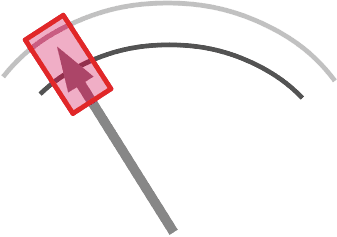
Back to top
Big number of measurements
The ear test have a many variables due human factor, above all.
Somewhat, it may be compensated by big number of tryings, participants, equipment items.
Big participant and trying number is recommended
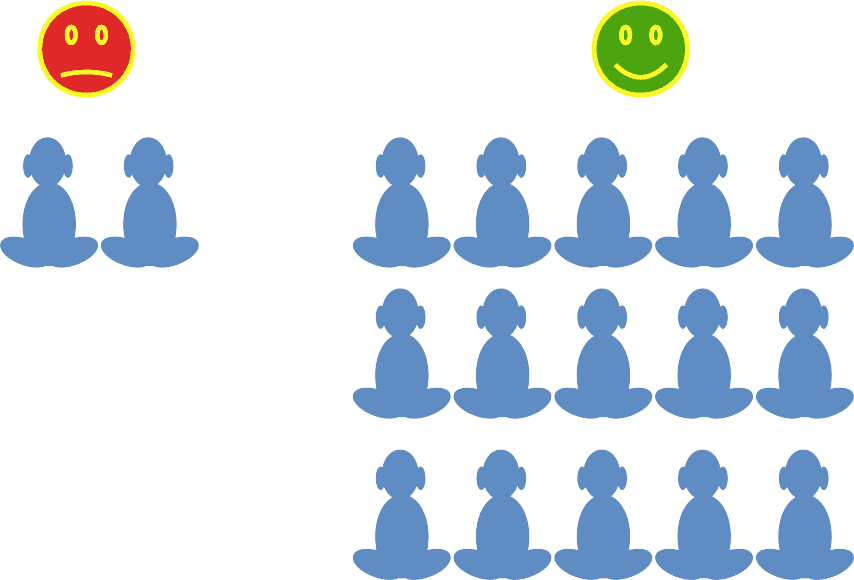
In the "Measurement precision issue" part was considered example: providing 1% precision.
There are recommended 300 tryings.
However, it don't guarantee 100 % of true.
Participant skills can cause biasing of results, as example.
To compensate it with precision 1%, we should invite 300 = (1/1%)*3 = (1/0.01)*3 participants.
Thus total number of measurements is 90000 = 300 trying * 300 participants
We should account each feature, that can cause mistake probably. To a first approximation, we should invite participants with different skills and groups of participants with same skill should have same number of members.
In the trial conclusions we should group results by participant skills.
General rule:
number measurements is enough,
if adding of several participants and/or tryings and/or equipment items and/or other
impact to results into allowable error margin.
Back to top
Careful condition control
Conditions define experiment. Changing conditions can bias results significantly.
Careful control of conditions provide the test exactness
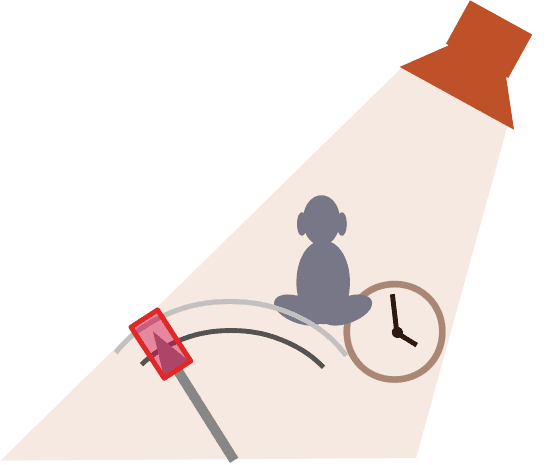
Example:
Somebody want to compare DACs. He asks peoples who have the devices, check it on some public HiFi test CD.
These tests, as rule, performed at home without exact condition control. We have experiment at different speakers, listening places, the ambient noise, etc. Even experiment, described in details, may have subtle, at first glance, issues, that impact upon result.
As rule, before experiment we can't know exactly, that details are important in the trial. Only result figures can show, that details are unimportant in our experiment: impact to result into allowable error margin.
As example, we cannot expect listening skill affected trial results. But for some tests, it might be important.
Back to top
Conclusions
- Blind test, double blind test, ABX test are intended to "objective" measurement of "subjective" (immeasurable) perception.
- Properly performed and recorded hi-fi blind test may be a serious objective evidence of subjective perception.
- The trial may be performed at home for personal purposes, but can't be used as technical evidence.
- The trial should be designed, performed in a manner that maximizes independence from number of participants and tryings and/or other. As reference value may be allowable changes into error margin.
- The independence is achieved by big number of participants and tryings, equipment items, etc.
- Even correctly designed and performed HiFi test don't guarantee absolute truth. Because new knowledge may open new details.
Share the article in the social networks, forums
Back to topFrequently Asked Questions
How do you test a blind audio?
To blind test its partisipants should not know what is sounds now. It may require additional equipment.
Read details...
What is blind listening?
Blind listening is means that listener can't see acoustic source.
Read details...
Back to top
Popular HiFi test kinds
- lossless vs mp3 test
- 16 bit vs 24 bit
- PCM vs DSD
- FLAC vs WAV
- acoustic cables
Back to top
References
- Normal distribution (statistics)
- Bob Snyder. Music and Memory: An Introduction
- About testing headphones
- One of careful test examples
- How Well Can You Hear Audio Quality?

Back to top
Read more
- Hearing Test vs. Measurements Audio. Where True? >
- Why We Can't Compare Different Audio Formats >
- Could a Music Be Used for Sound Quality Tests? [Article] >
Audio Basis - articles about audio
Back to top